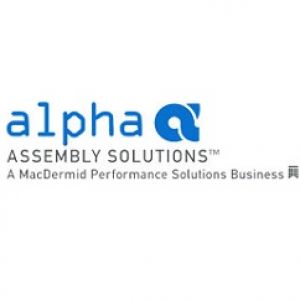PV Ribbon and Its Importance in Solar Energy Production
Posted by Alphaassembly on May 19th, 2017
As more and more residences and businesses are switching to environmentally friendly and sustainable power generation, the demand for PV (photovoltaic) cell assemblies to make solar modules continues to increase. In an ideal set-up, every solar cell material must be manufactured to ensure the highest amount of efficiency at the lowest possible cost. PV ribbon is one of the factors that can contribute to the performance of a solar module, which makes it important for it to be manufactured using superior quality materials. When used with high-quality soldering material solutions, the PV ribbon should be quite effective in collecting current from the photovoltaic cells.
PV ribbon is a tinned, hot-dipped copper conductor that does not only collect current, but joins individual solar cells to enable generated current to be carried to a distribution system. There are two kinds of PV ribbon: interconnect and bus bar. Interconnect ribbon delivers the generated current from the photovoltaic cells to the bus bar, and the bus bar ribbon sends the accumulated current to an electrical distribution system or junction box. Ideally, the PV interconnect ribbon must be 1mm to 3mm wide, and around 0.085 to 0.2mm thick. The bus bar ribbon is bigger than an interconnect ribbon, measuring 0.2mm to 0.5mm thick and 3mm to 6mm wide.
PV ribbon is typically made of copper, which can be of different grades. Regardless of the grade, manufacturers must ensure that the material is highly conductive. That way, the solar panel can function at maximum efficiency. Most PV ribbons are made of oxygen-free electronic copper, electrolytic-tough-pitch copper, or oxygen-free copper, each of which are aptly called OFC 10100/CDA 101, ETP (OFC 11000/CDA), and OFC 10200/CDA 102 respectively. Some types of PV ribbon are made of aluminum alloys, but they are less common in the industry.
It is crucial for the PV ribbon to be manufactured using a process that can minimize drossing, which can occur on the alloy during a coating process. Copper erosion is minimized by engineering several alloys into the material. Lead-free solder is offered by some manufacturers for lead-free photovoltaic cell manufacturing. High-quality pv ribbon must be coated to ensure uniform thickness for the solder, and finished with high precision spooling.
About the Author:
Alpha Assembly Solutions Inc. is a premier company engaged in the development and manufacture of high quality electronics assembly materials. Since the year of its inception, way back in 1872, the company has played its role on the frontline of innovation, bringing many first-to-market products to the fore thereby, creating a premier niche for itself in the market.


